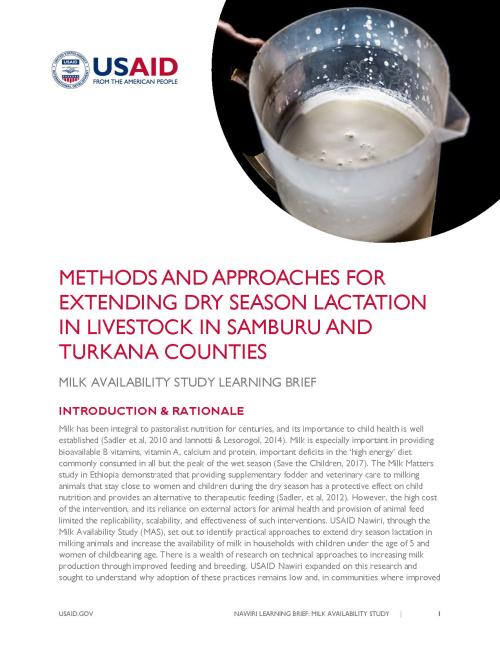Milk has been integral to pastoralist nutrition for centuries, and its importance to child health is well established. USAID Nawiri conducted this study to identify practical approaches to extend dry season lactation in milking animals and increase the availability of milk in households with children under the age of 5 and women of childbearing age. In particular, it sought to understand why adoption of improved milk production practices remains low and, in communities where improved breeds had been distributed, whether it made a difference in milk consumption over the long term. The study included desk reviews, county government and community consultations and discussions, key informant interviews, and participatory mapping. Findings validated the importance of improving water and soil production and management as critical pathways to sustainable improvements in milk availability. Moreover, the study confirmed demand for new, user-centered approaches to local capacity building that engage community members as partners (not beneficiaries) and incorporate practical demonstrations and other experiential learning methods. Insights on how to improve programming in this area, including by approaching milk production with the aim of improving human nutrition; using an agro-ecological resilience design approach to manage natural resources; and adapting approaches to the local socio-ecological context were gathered.
Learning Brief
